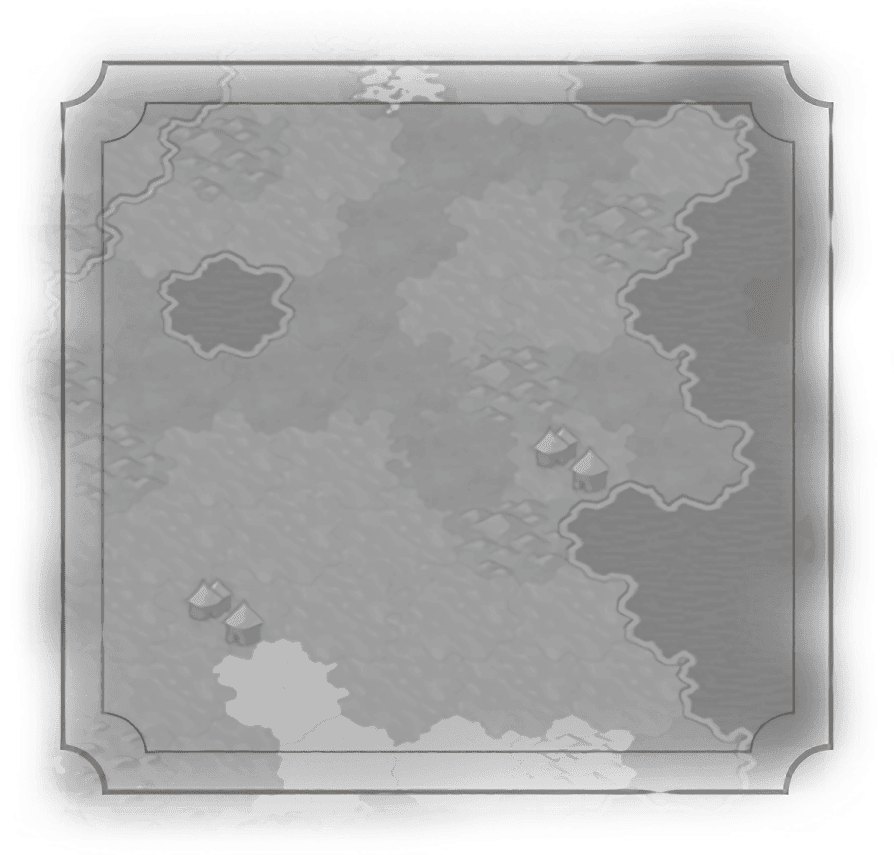Improvements
Airstrip
Alcázar
Barricade
Batey
Cahokia Mounds
Camp
Château
Chemamull
City Park
Colossal Head
Corporation
Farm
Feitoria
Fishery
Fishing Boats
Fort
Geothermal Plant
Golf Course
Great Wall
Hacienda
Ice Hockey Rink
Industry
Kampung
Kurgan
Lumber Mill
Mahavihara
Mekewap
Mine
Missile Silo
Mission
Moai
Modernized Trap
Monastery
Mountain Tunnel
Nazca Line
Nubian Pyramid
Offshore Oil Rig
Offshore Wind Farm
Oil Well
Open-Air Museum
Outback Station
Pā
Pairidaeza
Pasture
Plantation
Polder
Qhapaq Ñan
Quarry
Reinforced Barricade
Rock-Hewn Church
Roman Fort
Seaside Resort
Seastead
Ski Resort
Solar Farm
Sphinx
Stepwell
Terrace Farm
Trading Dome
Trap
Vampire Castle
Wind Farm
Ziggurat
Routes


Cahokia Mounds
Description
Unlocks the Builder ability to construct a Cahokia Mounds.
+3 Gold. Cities receive +1
Gold. Cities receive +1  Amenity from their first Cahokia Mound improvement. Upon discovering Natural History, cities receive +1
Amenity from their first Cahokia Mound improvement. Upon discovering Natural History, cities receive +1  Amenity from their second Cahokia Mound improvement. +1
Amenity from their second Cahokia Mound improvement. +1  Food for every 2 adjacent Districts once Feudalism is discovered or for every adjacent District once Replaceable Parts is researched. Provides +1
Food for every 2 adjacent Districts once Feudalism is discovered or for every adjacent District once Replaceable Parts is researched. Provides +1  Housing. Receive an additional
Housing. Receive an additional  Housing once Cultural Heritage is discovered. Cannot be built adjacent to other Cahokia Mounds.
Housing once Cultural Heritage is discovered. Cannot be built adjacent to other Cahokia Mounds.
+3
 Gold. Cities receive +1
Gold. Cities receive +1  Amenity from their first Cahokia Mound improvement. Upon discovering Natural History, cities receive +1
Amenity from their first Cahokia Mound improvement. Upon discovering Natural History, cities receive +1  Amenity from their second Cahokia Mound improvement. +1
Amenity from their second Cahokia Mound improvement. +1  Food for every 2 adjacent Districts once Feudalism is discovered or for every adjacent District once Replaceable Parts is researched. Provides +1
Food for every 2 adjacent Districts once Feudalism is discovered or for every adjacent District once Replaceable Parts is researched. Provides +1  Housing. Receive an additional
Housing. Receive an additional  Housing once Cultural Heritage is discovered. Cannot be built adjacent to other Cahokia Mounds.
Housing once Cultural Heritage is discovered. Cannot be built adjacent to other Cahokia Mounds.Historical Context
North American civilizations like the Adena, Hopewell, and Mississipian cultures constructed thousands—perhaps tens of thousands—of earthen mounds over the continent in the centuries before European contact. The purpose of many of these mounds remains mysterious. Some, but not all align with astronomical landmarks. But the greatest of these are the ones associated with the culture at Cahokia.
The largest mound at Cahokia is called “Monks Mound” because a community of Trappist monks built a settlement on or near it in the early colonial era. What the Cahokian citizens called it is unknown to us. The largest part of the structure is about 900 feet long, 250 feet wide, and approximately 20 feet tall, and is cleverly engineered to minimize the shrinkage and swelling associated with the clay soil, which accounts for why it has survived for centuries in an area prone to flooding. Monks Mound was enlarged and expanded over time, but eventually damaged in an earthquake in the time preceding the abandonment of the city.
Because the culture at Cahokia did not leave written records or inscription, little information about the purpose of the great mounds has survived. Archaeological evidence from the site suggests the mounds were a key part of the religious practices of the culture.
The largest mound at Cahokia is called “Monks Mound” because a community of Trappist monks built a settlement on or near it in the early colonial era. What the Cahokian citizens called it is unknown to us. The largest part of the structure is about 900 feet long, 250 feet wide, and approximately 20 feet tall, and is cleverly engineered to minimize the shrinkage and swelling associated with the clay soil, which accounts for why it has survived for centuries in an area prone to flooding. Monks Mound was enlarged and expanded over time, but eventually damaged in an earthquake in the time preceding the abandonment of the city.
Because the culture at Cahokia did not leave written records or inscription, little information about the purpose of the great mounds has survived. Archaeological evidence from the site suggests the mounds were a key part of the religious practices of the culture.

Traits
Unique To
+3  Gold
Gold
 Gold
Gold+1.0  Housing
Housing
 Housing
HousingAdjacency Bonus
+1  Food from every 2 adjacent district tiles.Requires Feudalism.Becomes obsolete with Replaceable Parts.
Food from every 2 adjacent district tiles.Requires Feudalism.Becomes obsolete with Replaceable Parts.
 Food from every 2 adjacent district tiles.Requires Feudalism.Becomes obsolete with Replaceable Parts.
Food from every 2 adjacent district tiles.Requires Feudalism.Becomes obsolete with Replaceable Parts.+1  Food from each adjacent district tile.Requires Replaceable Parts.
Food from each adjacent district tile.Requires Replaceable Parts.
 Food from each adjacent district tile.Requires Replaceable Parts.
Food from each adjacent district tile.Requires Replaceable Parts.
Description
Unlocks the Builder ability to construct a Cahokia Mounds.
+3 Gold. Cities receive +1
Gold. Cities receive +1  Amenity from their first Cahokia Mound improvement. Upon discovering Natural History, cities receive +1
Amenity from their first Cahokia Mound improvement. Upon discovering Natural History, cities receive +1  Amenity from their second Cahokia Mound improvement. +1
Amenity from their second Cahokia Mound improvement. +1  Food for every 2 adjacent Districts once Feudalism is discovered or for every adjacent District once Replaceable Parts is researched. Provides +1
Food for every 2 adjacent Districts once Feudalism is discovered or for every adjacent District once Replaceable Parts is researched. Provides +1  Housing. Receive an additional
Housing. Receive an additional  Housing once Cultural Heritage is discovered. Cannot be built adjacent to other Cahokia Mounds.
Housing once Cultural Heritage is discovered. Cannot be built adjacent to other Cahokia Mounds.
+3
 Gold. Cities receive +1
Gold. Cities receive +1  Amenity from their first Cahokia Mound improvement. Upon discovering Natural History, cities receive +1
Amenity from their first Cahokia Mound improvement. Upon discovering Natural History, cities receive +1  Amenity from their second Cahokia Mound improvement. +1
Amenity from their second Cahokia Mound improvement. +1  Food for every 2 adjacent Districts once Feudalism is discovered or for every adjacent District once Replaceable Parts is researched. Provides +1
Food for every 2 adjacent Districts once Feudalism is discovered or for every adjacent District once Replaceable Parts is researched. Provides +1  Housing. Receive an additional
Housing. Receive an additional  Housing once Cultural Heritage is discovered. Cannot be built adjacent to other Cahokia Mounds.
Housing once Cultural Heritage is discovered. Cannot be built adjacent to other Cahokia Mounds.Historical Context
North American civilizations like the Adena, Hopewell, and Mississipian cultures constructed thousands—perhaps tens of thousands—of earthen mounds over the continent in the centuries before European contact. The purpose of many of these mounds remains mysterious. Some, but not all align with astronomical landmarks. But the greatest of these are the ones associated with the culture at Cahokia.
The largest mound at Cahokia is called “Monks Mound” because a community of Trappist monks built a settlement on or near it in the early colonial era. What the Cahokian citizens called it is unknown to us. The largest part of the structure is about 900 feet long, 250 feet wide, and approximately 20 feet tall, and is cleverly engineered to minimize the shrinkage and swelling associated with the clay soil, which accounts for why it has survived for centuries in an area prone to flooding. Monks Mound was enlarged and expanded over time, but eventually damaged in an earthquake in the time preceding the abandonment of the city.
Because the culture at Cahokia did not leave written records or inscription, little information about the purpose of the great mounds has survived. Archaeological evidence from the site suggests the mounds were a key part of the religious practices of the culture.
The largest mound at Cahokia is called “Monks Mound” because a community of Trappist monks built a settlement on or near it in the early colonial era. What the Cahokian citizens called it is unknown to us. The largest part of the structure is about 900 feet long, 250 feet wide, and approximately 20 feet tall, and is cleverly engineered to minimize the shrinkage and swelling associated with the clay soil, which accounts for why it has survived for centuries in an area prone to flooding. Monks Mound was enlarged and expanded over time, but eventually damaged in an earthquake in the time preceding the abandonment of the city.
Because the culture at Cahokia did not leave written records or inscription, little information about the purpose of the great mounds has survived. Archaeological evidence from the site suggests the mounds were a key part of the religious practices of the culture.
Traits
Unique To
+3  Gold
Gold
 Gold
Gold+1.0  Housing
Housing
 Housing
HousingAdjacency Bonus
+1  Food from every 2 adjacent district tiles.Requires Feudalism.Becomes obsolete with Replaceable Parts.
Food from every 2 adjacent district tiles.Requires Feudalism.Becomes obsolete with Replaceable Parts.
 Food from every 2 adjacent district tiles.Requires Feudalism.Becomes obsolete with Replaceable Parts.
Food from every 2 adjacent district tiles.Requires Feudalism.Becomes obsolete with Replaceable Parts.+1  Food from each adjacent district tile.Requires Replaceable Parts.
Food from each adjacent district tile.Requires Replaceable Parts.
 Food from each adjacent district tile.Requires Replaceable Parts.
Food from each adjacent district tile.Requires Replaceable Parts.


